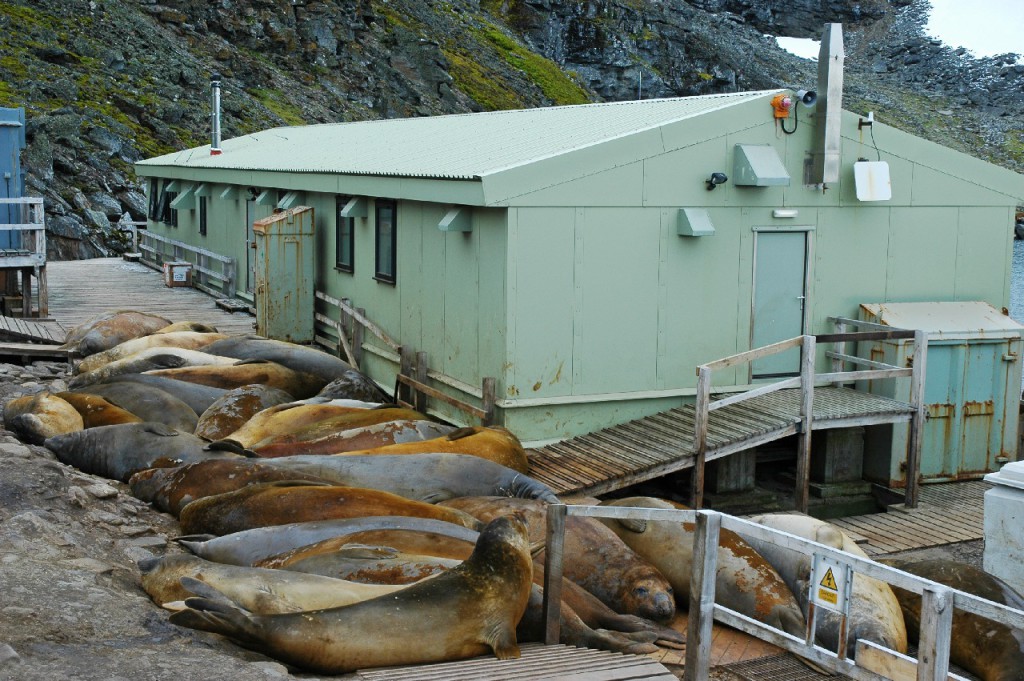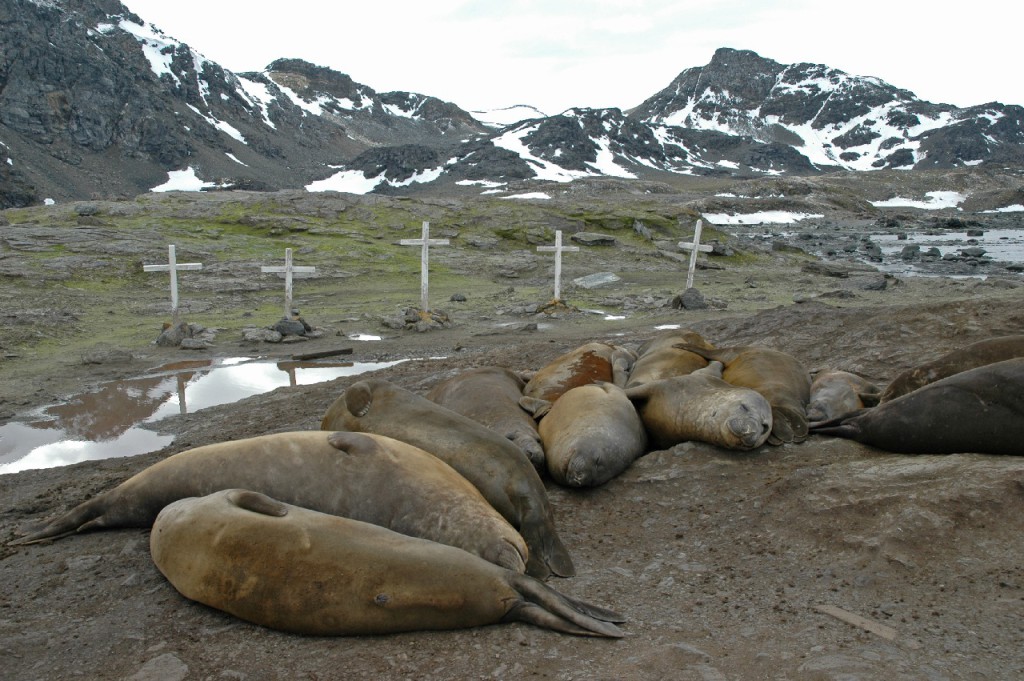Week 5: wrapping up and travelling home – March 21st, 2012
11 April, 2012 RRS James Clark Ross
Jen Jackson, BAS
This week we bios have all been busy wrapping up our science work for this cruise: Adam (link: meet a scientist) is finally completing his bivalve experiments after many weeks in the cold room, Rachel has been entering all specimens into a database, examining the brittle star collections and taking small tissue samples from the brittle stars to send off for DNA barcoding when we return, Mel has been carefully checking through the sea cucumber collection and is beginning the long process of describing them; this requires a lot of examination under the microscope, careful sketching of specimens and referring to a lot of scientific literature. Camille has been taking high quality photographs of all the brittle stars and sea cucumbers in order that we can document them fully. Huw (our Principal Scientific Officer) has a big organizational task to make sure that all of our animals get into the right boxes and to fully document all box contents for import into the UK when the James Clark Ross finally arrives home in June. We have also had help from the ship’s doctor (Jim Rudd), from chemist Douglas (University of East Anglia) and from Stuart MacMillan of BAS.
I had a lovely phone chat on Wednesday morning with class 3J from Craneswater Junior School in Portsmouth. Michael Gloistein (www.gm0hcq.com) is in charge of communications on this cruise and he was able to help me set up the call via satellite phone and talk about life in the Antarctic. We fielded a lot of interesting questions about penguins, the climate, and our navigational equipment!
The James Clark Ross has a number of other jobs to do during the Antarctic season as well as on-board science. It also helps to ship people and their supplies and equipment between bases and ports in the Falklands, South America, the sub-Antarctics and the Antarctic. Since picking up the people from Halley base the ship has been very busy, and it just got busier on Sunday when we picked up all the remaining people on Signy Island in the Scotia Sea and helped them to close down the station. Signy is a long-term UK sub-Antarctic research base which has been carrying out environmental monitoring since it first opened in 1947. Nowadays it closes down over the wintertime, so as autumn comes everyone and their supplies must be evacuated and the whole base closed down and secured in preparation for the Antarctic winter. Recently the station has become quite overrun with some large nonhuman visitors as you can see from the pictures. Packing up the base around the roaring elephant seals felt like quite a challenge for us folk from the JCR but the people who work on Signy are evidently very used to it!

We are now heading back to the Falklands and expecting some rough weather in the Drake Passage on our way back across the Polar Front – these are notorious for being some of the roughest seas in the world so everything is lashed down tight!
Thanks for reading and see you on the next trip South.
Position Report for Entry
| Latitude: | 52° 19? S |
| Longitude: | 57° 10? W |
| Cruise Number: | (not entered) |
| Heading: | 281.96° |
| Wind: | |
| Air Temperature: | 3.2°C |
| Sea Temperature: | 6.3°C |
| Pressure: | 993.38 hPa |
